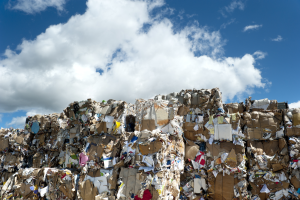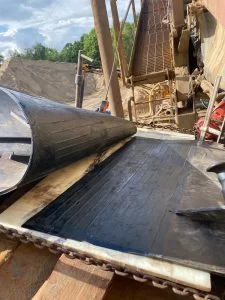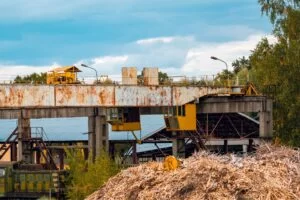The government is in favour of greater reuse and recycling of steel components in the construction industry, Materials Recycling World reports. The move is intended to make construction a more environmentally friendly sector, and help achieve the ambitious carbon net zero targets by 2050.
Reusing steel components reduces the need for primary materials, which helps to conserve the earth’s natural resources and produces less carbon emissions. This conclusion was drawn by members of the Environmental Audit Committee (EAC), which submitted its findings in a report to the Department for Business, Energy and Industrial Strategy (Beis).
Beis commented: “Officials are working alongside the steel and scrap sectors to explore whether the industry solutions can achieve the quality and quantity of scrap which will be needed by UK steel producers, as part of the drive to decarbonise steel production in the UK.”
One issue raised by Beis was the certification of used steel components, to ensure that they were fit for purpose. It is currently investigating ways of putting the necessary checks and standards in place, commenting that it was in the process of ‘evidence gathering.’
The EAC chair, Conservative MP Philip Dunne, welcomed the favourable comments from Beis. He said: “The Government’s positive response to our committee’s report represents a clear statement of intent to crack down on emissions from the built environment.”
He added: “Emissions from buildings – both in the fabric of building materials and the operating emissions – have been overlooked for too long, but it is a promising sign that ministers now appear intent on taking action.”
The demolition industry is often blamed for being high-carbon and unsustainable, as Building magazine reports. However, within the sector, a lot of effort is going on behind the scenes to improve standards of recycling, material reuse, and carbon reduction. Many contractors are also switching to greener fuels to operate their machinery.
Although about 95% of materials from demolition sites are recycled, much of it is shipped overseas, which generates more carbon in the transportation process. The only way to eliminate this problem is by reusing, rather than recycling, the materials.
Ben Griffiths, operations director at demolition contractor, told Building magazine that reusing materials was challenging, partly because it is difficult to extract them safely from the original structure, and partly because of the regulatory process for certifying materials for reuse.
He said: “It’s very difficult. A lot of clients go through the exercise with us because they have to. It’s a BREEAM box tick. You do an audit for materials, give it to the client and they make the decision on what is viable to be reused. If I’m honest, quite often with steel it appears more hassle than it’s worth to reuse because of the requirements.”
It is hoped that the EAC report and the subsequent promises by Beis to address the issue will lead to higher rates of steel reuse in the construction sector in the future.
If you are looking for conveyor belt skirting, please talk to us today.




